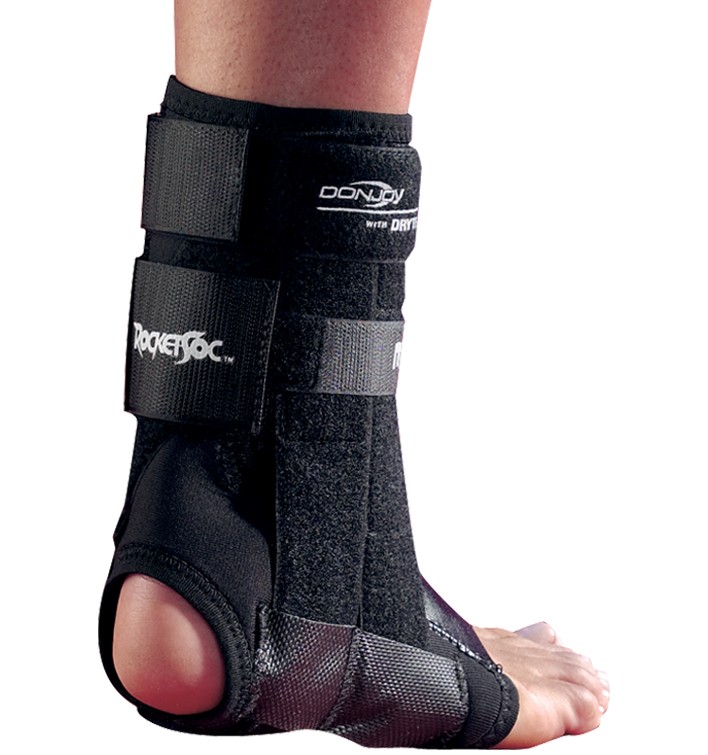The topic of taping and bracing is much like an ice berg: we only see what is on the surface while the rest of the ice berg is underwater. There is very little the public knows about taping and bracing and what you don’t know may surprise you. For example, when dealing with an ankle sprain, parents, coaches, and athletes often believe 2 things:
1. Braces prevent all future ankle sprains
2. Braces make the ankle stronger.
Although there is SOME truth to these assumptions, it is not the whole truth.
Ankle braces used after an acute injury will help support the already weak ligaments and tendons that were damaged from the initial injury. As time goes on, however, the ankle does not get stronger or gain stability if the brace is continually used. The ankle with continuous support from an ankle brace becomes weaker and less stable which increases the degree of ankle sprains in the future. Because the ankle is more easily sprained, the brace is worn more often, which further weakens the ankle, and the problematic cycle continues.
You may be asking yourself, “Well, if ankle braces are not the solution to the problem, then what is?”
Well, you can get your pen and paper out because here is the solution: strengthening, balance and coordination exercises for the lower extremity. Strengthening, balance and coordination exercises work to recruit muscle fibers that act as stabilizers during uncoordinated movements. With time, the constant counter-moves the ankle does with these exercises helps decrease the chance of future sprains.
Braces are not evil and are great for starting off your athlete who has a fresh ankle sprain, but decreasing the amount of ankle sprains is not going to happen with just the bracing.
There has to be a strengthening program that builds up the muscles around what was damaged. In time, the injured ankle probably won’t need the ankle brace.
Visit one of our clinics in Petoskey, Charlevoix, Cheboygan, Indian River and Harbor Springs to discuss your concerns and goals. We offer free consultations to help answer your questions about how our Physical Therapists can help you.








